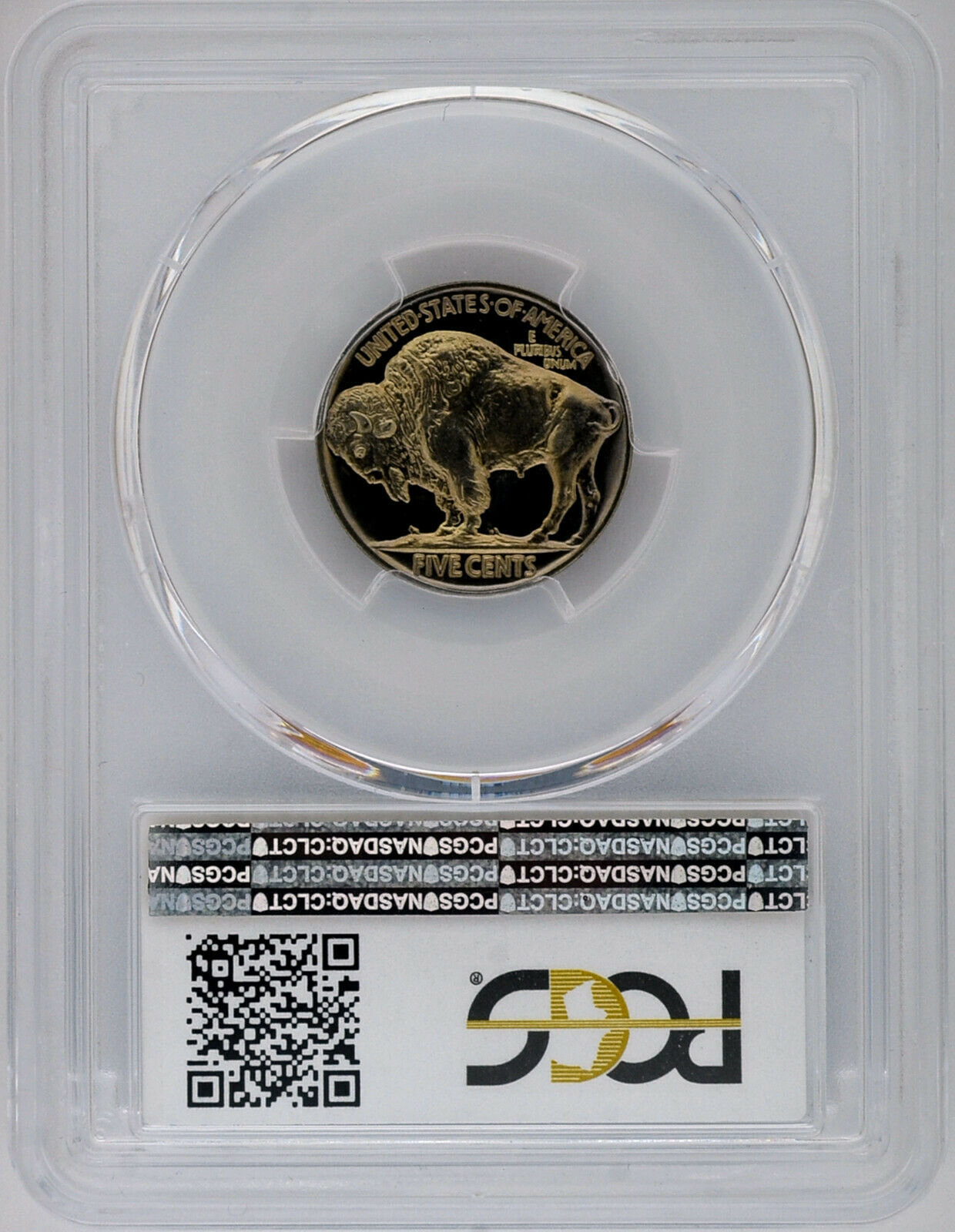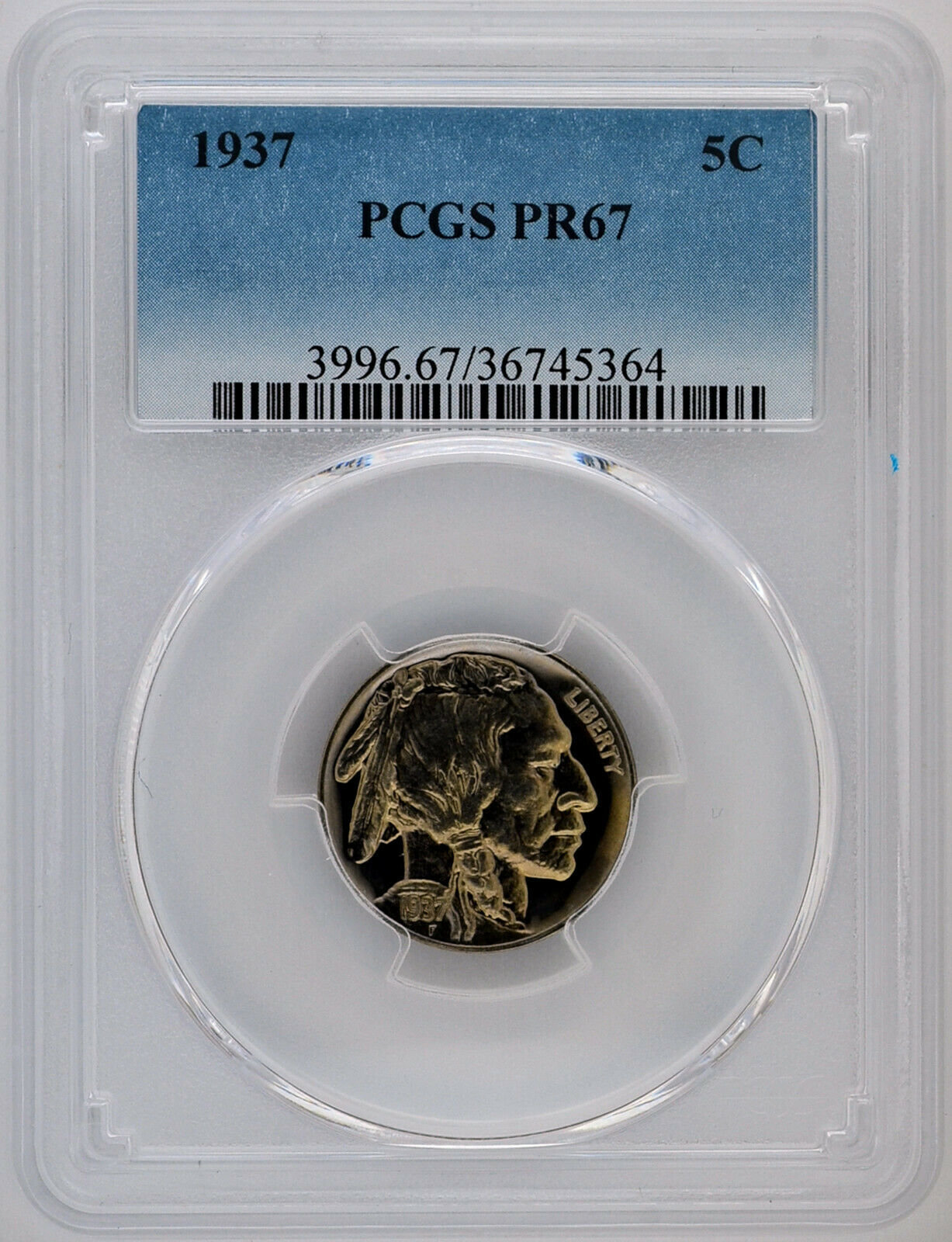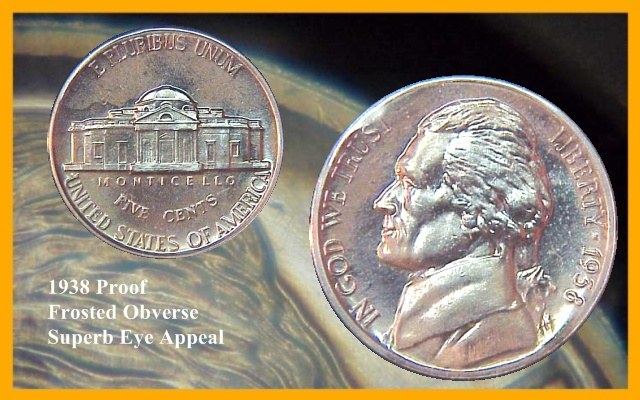What do you call a 1937 proof buffalo nickel that has only partial cameo contrast?
 BUFFNIXX
Posts: 2,727 ✭✭✭✭✭
BUFFNIXX
Posts: 2,727 ✭✭✭✭✭
I was looking at a pcgs pr67 1937 buffalo nickel that has partial cameo contrast. On the reverse all lettering is cameo and the buff partially cameo with the hair detail being cameo but not the high points of the bison’s back. How would you describe this?
1) semi cameo or...
2) partial cameo or....
3) 50 % cameo..... ( with the percent giving the amount of the design that has the cameo contrast.)
right now pcgs and ngc will give 1937 proof buffs a cameo designation if it is 100 percent cameo but not one that has only some partial cameo contrast. Do you think partial cameo contrast should also be noted?
Also has anyone ever seen or heard of a 1936 brilliant cameo?
I am not aware of any.
And actually I am only aware of pcgs giving the cameo designation. Does ngc do this?
a.k.a "The BUFFINATOR"
Comments
I think it should be called a PR67 just as it has been graded with the understanding that it is most likely an early strike off a fresh die(s).
A frosted 67> @BUFFNIXX said:
Frosted/PF67 with noticeable field to device obverse contrasts
No.
No.
Yes.
I wonder why you would have no 1936 buffalo brilliant proofs being cameo and you would have a few 1937 being proof cameo. Would that be a difference in the way the 1936 and 1937 brilliant proof buffaloes were made?
I would think that if the proof making process were the same you would surely have a few 1936 brilliant cameo proof buffs.
a.k.a "The BUFFINATOR"
RWB's book on 1936-1942 coinage is where I would look. There couldn't have been that many brilliant proof dies used in 1936. I wouldn't assume that every die would necessarily produce a cameo. (Look at 1936-1942 cameo quarters - they don't exist as slabbed and designated by the top 4). There were likely more dies produced for the nickels in 1937, producing a higher chance of producing a cameo. To be honest, of the limited number of designated pieces I have seen in hand, I have never really been impressed with the degree of contrasts even on the 1937.
I would just call it a nice Buff....The coin will stand on it's own merits. Cheers, RickO
"Normal?"
It seems the mint may have changed the way the Proof dies were prepared in 1937 from the way it was done in 1936. At one time, cameo Proofs were very scarce to rare. Now, you cannot find anything that is not DCAM!
Just thought of something. The grading services can do anything they wish. One service added Brown-Red to describe copper. At one place we started putting the number of steps on a nickel (5, 5 1/2, 6). Putting the percentage of "white" remaining on a coin (100% white, 90% white). Notice how the "Semi-PL" designation has fallen out of favor. So % of cameo could be done but it would just add more subjectivity. When a 30% Cameo nickel starts to be valued way more than a normal Proof, you may see it.
I expect a 30% cameo designation about the time we start seeing a 30% FBL, FB, FH, etc., designation which is pretty much never. But then again, I'm sure the Mac sticker people will come up with something. http://www.macablege.com/
It has to be 100% both sides to qualify. Otherwise, it's the horse that came in 4th....
Here is a picture of the reverse of the 1937 buffalo proof I am talking about here.

Very nice evidence of cameo effect on the buff's hair, all letters, exergue, but not on the central details of the bison.
a.k.a "The BUFFINATOR"
You call it a 1937 proof buffalo nickel that has only partial cameo contrast.
Here is picture of obverse that goes with the above picture of he reverse

a.k.a "The BUFFINATOR"
I think I would call it 30 - 40 percent cameo.
a.k.a "The BUFFINATOR"
Well I bought the coin today!! Will let you all know how it looks to me in hand. But from the pictures it looks like an exceptionally nice proof 1937. I will put a sticker on it saying “light CAMEO” or “partial CAMEO”. That seems appropriate without stretching it. Could have never afforded one in full cameo that said so on the slab.
Actually in my opinion a full set of proof buffaloes is....
1913 type one, matte
1913 type two, matte
1914, matte
1915, matte
1916, matte
1936, satin finish
1936, brilliant
1937, brilliant
1937, brilliant, cameo
Hey and maybe there is a 1936 proof cameo hiding out there somewhere!?
So that is nine coins. Any thoughts on that?
a.k.a "The BUFFINATOR"
I'd say "partial" frosting is better than no frosting. But...than again, how are the mirrors and contrast?

Leo
The more qualities observed in a coin, the more desirable that coin becomes!
My Jefferson Nickel Collection
I'd say it gets lumped into the eye appeal bucket. If you think it's worth a slight premium, as a collector, I would agree.
Collector, occasional seller
Just picked up the coin today from my mailman, it is a beautiful coin and the semi cameo contrast is really cool.
a.k.a "The BUFFINATOR"
Great looking coin.
Actually, for proof coins that nearly earn a CAM designation, NGC will use the star designation. So a really close to cam PR67 would instead get PR67*. Same for coins that are really close to Ultra Cameo, they give those the Cameo designation and a star.
I don't think the companies need to get involved with calling coins partial cameo. It either is or it isn't, that's what they've been doing (with the NGC star exception) and that's what they should keep doing. Really nice coins that are close go for premiums already and that's good enough for me.
Michael Kittle Rare Coins --- 1908-S Indian Head Cent Grading Set --- No. 1 1909 Mint Set --- Kittlecoins on Facebook --- Long Beach Table 448
Partial cameo or semi-cameo or almost cameo too often are used by eBay sellers in an attempt to justify a higher price for something they don’t have.
"Kind of pregnant" comes to mind.